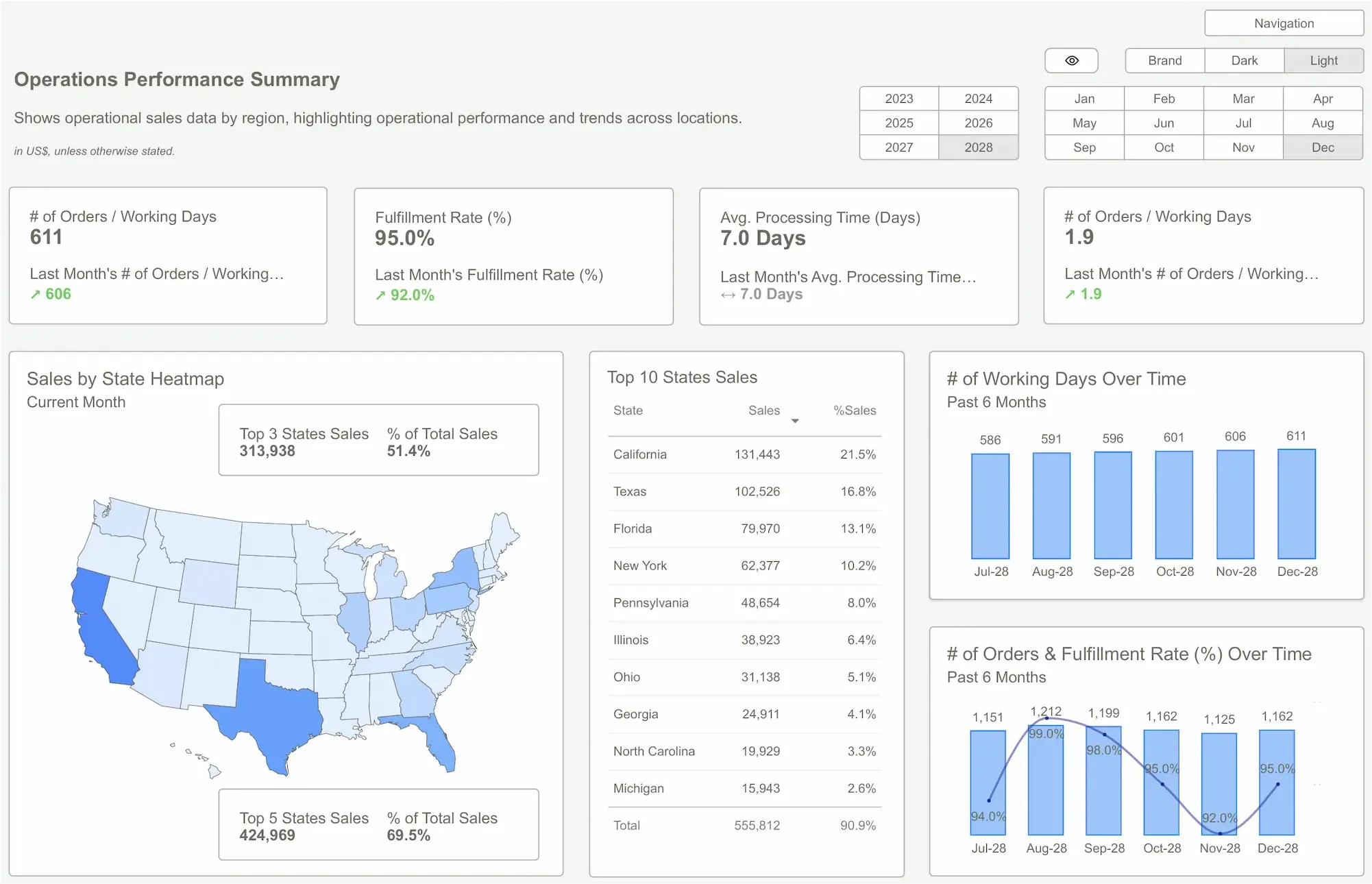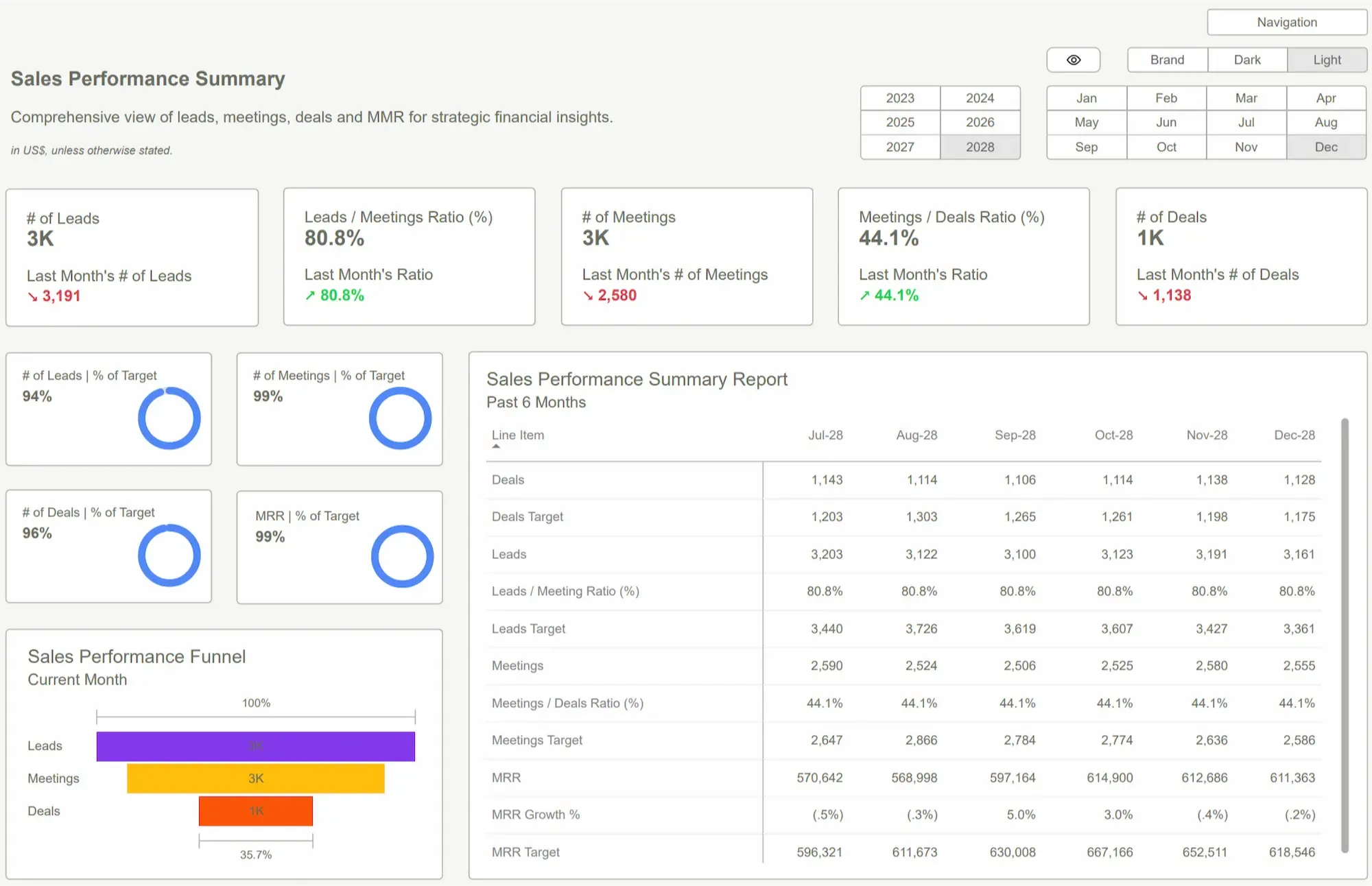The Truth About Forensic Accounting: Forget Fraud, Find Your Momentum

The Truth About Forensic Accounting: Forget Fraud, Find Your Momentum
You’re a founder, an operator, a CFO. You live and die by your numbers. Or at least, you think you do.
The hard truth is this: you can’t lead or scale a company without real clarity from your financials. And you won’t get that by skimming your QuickBooks P&L, nodding along to a surface-level monthly summary, or staring at a dashboard full of vanity metrics. That’s business theater, not business intelligence.
This is why forensic accounting—when ripped from the hands of courtroom litigators and placed into the hands of a strategist—is the most powerful, underutilized tool for running a great business. It’s not about finding fraud. It’s about finding the truth. And the truth is where your momentum is hiding.
Let’s dig in.
What Is Forensic Accounting - When It’s Done Right?
Let’s get this out of the way. When most people hear “forensic accounting,” they picture a stuffy accountant in a back room, wearing a green visor and hunting for embezzlement schemes for a court case.
That’s the old definition. It’s boring, and for a growing business, it’s mostly irrelevant.
Forensic accounting for business strategy is the practice of investigating your financial and operational data to find the story behind the numbers. It’s not about legal compliance; it’s about uncovering insights that let you manage the business with absolute clarity and make better, faster decisions.
Think of it as an internal business audit performed by a strategist, not a cop. A traditional audit asks, “Are these numbers correct?” We ask, “Are these numbers telling us the right story? And if not, what story are we missing?” This is the foundation of true financial intelligence.
Why Most Forensic Work Is Useless (And What You Should Expect Instead)
Most forensic accounting services are built for one of two things: litigation or compliance. The goal is to produce a report that will stand up in court or satisfy a regulator. The work is meticulous, backward-looking, and fundamentally defensive.
That’s fine if you’re being sued. It’s useless if you’re trying to build a category-defining company.
You don’t need a report that proves where every penny went in Q3 of last year. You need to know why your Cost of Goods Sold (COGS) is silently creeping up by 0.5% a month and eroding your margin. You need to know why your top-performing sales channel has the highest customer churn six months later.
A traditional forensic accountant will find the transaction. A strategist will find the pattern.
Your business doesn't need more reports; it needs more operational insights. You need someone who can connect the dots between a line item on your income statement, a workflow in your operations department, and your strategic goals for the next 18 months. That’s what a proper business financial review should deliver.
If You Don’t Know What You’re Measuring, You’re Not Managing
Most leadership teams are drowning in data but starved for wisdom. You’ve got dashboards. You’ve got KPIs. You have weekly meetings to review the numbers.
And you’re still flying blind.
Why? Because you’re measuring what’s easy, not what’s important.
- Website Visits: Who cares? What’s your Cost Per Qualified Demo?
- Number of New Customers: So what? What’s the Net Revenue Retention of those customers?
- Team “Busyness”: A recipe for burnout. What’s the ROI on your top 3 strategic initiatives?
This isn’t just inefficient; it’s dangerous. When your metrics are misaligned, you incentivize the wrong behavior. Your team chases ghosts, you burn cash on feel-good projects with no ROI, and decision fatigue sets in because no one is confident in the data they’re using. As a McKinsey report rightly notes, what you measure is what you get. If you're measuring noise, you'll get chaos.
Here are a few signs you’re measuring the wrong things:
- Your leadership meetings are spent debating the validity of the numbers.
- You can’t clearly connect your team’s daily work to a financial outcome.
- Your FP&A (Financial Planning & Analysis) process feels like a guessing game.
- You have a “successful” quarter on your KPIs, but your cash balance is shrinking.
If any of these sound familiar, you’re not alone. But it’s a clear signal that you need to stop looking at the surface and start digging.
The Modern Forensic Process: What We Actually Do
So how do you go from a mess of spreadsheets to a clear, actionable strategy? Our process isn’t about just “checking the books.” It’s a full diagnostic.
Step 1: Pull the Data, Not Just the Books
We start by integrating everything. Yes, your accounting software (QuickBooks, Xero, etc.), but also your CRM, your operational platforms (e.g., inventory management, project management tools), and your payroll systems. We want the raw material, not the pre-packaged, often misleading, summary report. The story isn’t just in your P&L; it’s in your sales pipeline, your support tickets, and your project timelines.
Step 2: Trace the Signals
This is where the forensic work begins. We’re detectives, but for cash flow and operational drag, not crime scenes. We trace anomalies back to their source.
- Example: We see a spike in refunds. We don't just note it. We trace it back. The spike happened 30 days after you onboarded a batch of customers from a new marketing campaign. That campaign had a low CPA, but the customers were a bad fit. The "cheap" marketing campaign is actually costing you a fortune in support time and refunds.
We connect the financial data to the operational cause. This is the core of data-driven decision making.
Step 3: Expose Gaps, Waste, and Missed Metrics
Once we trace the signals, the real picture emerges. We build a model of your business that shows you things your standard reports never will.
- The Gap: “You’re tracking Customer Acquisition Cost (CAC), but you’re not tracking it by channel. You’re overspending on Channel A, which brings in low-value customers, while underspending on Channel B, your most profitable source.”
- The Waste: “Your services team is spending 20% of their time on non-billable administrative tasks that could be automated. That’s a $250,000 annual leak.”
- The Missed Metric: “You’re not tracking your cash conversion cycle. By optimizing your invoicing and payables, you could unlock $150,000 in working capital without borrowing a dime.”
This is where the real value lies. We find the opportunities you’ve been blind to because you were looking at the wrong map. This isn’t just about the past; it’s about architecting a more robust future. For a deeper dive, check out our post on
Step 4: Deliver the Map, Not Just the Numbers
The final output isn’t a 300-page binder of spreadsheets. That’s useless.
We deliver a Strategic Clarity Map. It’s a concise, executive-level plan that shows you:
- The Diagnosis: Here’s exactly what’s happening in your business, in plain English.
- The Key Levers: These are the 3-5 most important metrics you need to watch.
- The Action Plan: Here are the immediate, high-impact operational and financial changes you should make.
We give you the “so what” and the “now what.” It’s a roadmap for your executive team, your board, and your investors that’s built on a foundation of undeniable truth from your own data.
Business Impact: What Happens After You Finally See What’s Going On
When the fog lifts, everything changes. Companies that go through this strategic forensic process see tangible results almost immediately:
- Faster, Better Decisions: No more debating data in meetings. You know the levers and can pull them with confidence.
- Eliminated Waste: You stop burning cash on initiatives, marketing channels, and operational processes that don’t deliver ROI.
- Aligned Teams: Everyone from sales to operations understands how their work directly impacts the company’s financial health. Read more on [Internal Link: "How to Align Finance with Strategy"].
- Investor & Board Confidence: When you can answer any question about your unit economics and growth drivers with this level of detail, you command respect. You’re no longer just pitching a vision; you’re presenting an airtight case.
- Reduced Founder Stress: The peace of mind that comes from knowing, truly knowing, how your business works is immeasurable.
As Gartner research on operational KPIs suggests, aligning operations with financial outcomes is a critical driver of enterprise value. This process makes that alignment a reality.
Forensic Accounting vs. Strategic Clarity: Are They Actually the Same Thing?
No. And this is the most important distinction.
Forensic accounting is the tool. It’s the shovel. It’s the rigorous, detailed, investigative technique we use to dig into the data.
Strategic Clarity is the outcome. It’s the treasure. It’s the state of knowing precisely how your business makes (and loses) money, where your opportunities are, and what to do next.
A lot of firms can sell you the shovel. They’ll perform the technical task of a forensic accountant. We’re in the business of finding the treasure. We use the techniques of forensic accounting, but we filter them through the lens of former founders and CFOs. We don't just give you data; we provide data analytics consulting that translates numbers into a concrete action plan.
You Don’t Need a Forensic Accountant - Until You Actually Want to Run a Great Business
You can keep running your business on gut feel, vanity metrics, and the reports your bookkeeper sends you. Many companies do. They grow, they stumble, they plateau, and the founders are never quite sure why.
Or, you can choose to see what’s really going on.
You can trade ambiguity for business clarity. You can exchange wishful thinking for a data-driven strategy. You can stop plugging leaks and start building a truly resilient, efficient, and scalable company.
The rigor of forensic accounting, applied with the mind of a strategist, is the fastest path to get there.
Ready to see what your data is really trying to tell you?
Let’s investigate your business together. We’ll uncover the hidden patterns, expose the blind spots, and build a map to your next stage of growth.
Frequently Asked Questions (FAQ) About Forensic Accounting
An audit confirms that your past financial statements are materially correct according to accounting standards (GAAP). Our forensic review diagnoses the why behind those numbers to improve future performance. An audit is for compliance; this is for strategy.
Absolutely not. Some of our best work is with healthy, fast-growing companies that want to scale intelligently. It’s about optimizing a good business to make it great. Proactive clarity is infinitely more powerful than reactive panic.
Typically, we need read-only access to your accounting software (e.g., QuickBooks), CRM (e.g., Salesforce), and any key operational platforms. We have strict data security protocols and sign an NDA before anything begins.
It depends on the complexity of the business, but a standard diagnostic engagement to deliver the Strategic Clarity Map usually takes 2-4 weeks. The goal is to deliver high-impact insights quickly.
Assuming their bookkeeper or fractional CFO is looking at the business this way. Most are focused on tax prep and historical reporting. They aren’t paid to connect operational data to financial outcomes and challenge your core assumptions.
A standard report tells you what happened. It doesn't tell you why it happened or what to do about it. If your report isn't leading to specific, actionable changes in your business strategy each month, it's not enough.
An internal team can be excellent at tracking and planning against known metrics. But they often lack the outside perspective and, frankly, the forensic mandate to challenge sacred cows and dig for the unknown unknowns. We augment, not replace, your internal team.
Ready to Unlock The Full Power of Clarity?
Explore our engagement options and pick the plan that fits your workflow.










